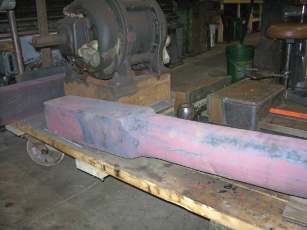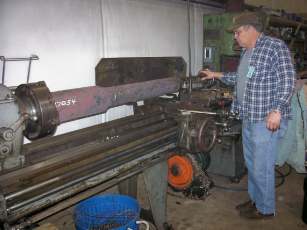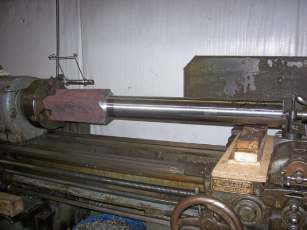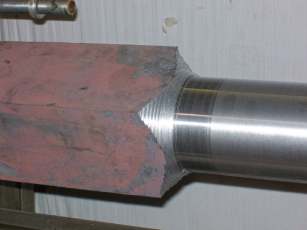

 As-delivered forgings to be machined to replace the old , worn, and severely rusted square shafts of undetermined age and soundness that were on the locomotive at the beginning of the project. The square portion will finish at 4 3/4 inch; the round section at 4 1/2 inch. (Photo by Grady Smith). |
 Dave Arthur ready to take the initial cut on the round section of the shorter of the two new square shaft forgings, in the newly donated and activated Reed-Prentice engine lathe. (Photo by Grady Smith). |
 Three cuts have been made on the short forging , and the diameter is within 1/10th of an inch of the finished size. Wooden blocks under the right end of the stock will support the weight of the piece for two weeks, until the next work session. The tailstock spindle has been retracted from the work slightly, to prevent the ball bearing center from taking a "set," or warping from being strained in one direction (down) for a long period of time. (Photo by Grady Smith). |
 The rough-stepped transition from round to square. This will be a smooth curve on the finished piece, and will reduce the likelihood of the forging breaking at this point. (Photo by Grady Smith). |